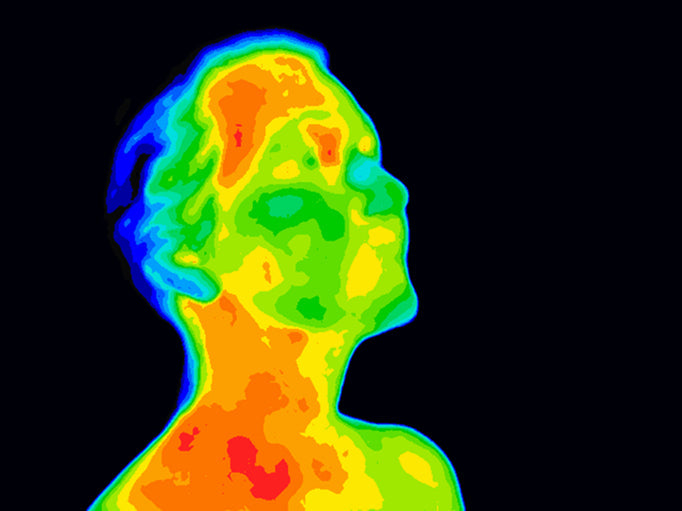Did you know that a change in your body temperature is often the first sign of disease? You won't actually feel this temperature, of course—but a thermography scan will.
Thermography has been used throughout the world for more than 20 years as a complement to detect and treat disease. Recent advancements have made it easier—and much more affordable—to offer health care practitioners and their patients a more well-rounded view of their overall health.
So what is thermography, and how does it actually work?
What is thermography?
Thermography, also known as digital infrared thermal imaging—or DITI—uses a camera to measure the heat inside your body. The scanning device then converts infrared radiation that's emitted from the skin's surface into electrical impulses, which are visualized on a screen. Picture a scan of your body and a rainbow of colors indicating hot or cold spots throughout it.
Thermography is performed by highly trained, board-certified specialists to find areas of the body where these subtle temperature changes exist, which may indicate a type of inflammation or underlying disease.
While MRIs and mammography look for structural and anatomical abnormalities like tumors, thermography looks for functional and physiological abnormalities—like heat from the actual process that occurs before a tumor develops. It looks at the body's physiology to detect anything that might be off.
What is thermography used for?
Health care practitioners have used thermography for years as a complement to breast exams and mammograms. Mammography will detect dysfunction after a change in the breast's density, while thermography will detect signs of inflammation that a mammography may have missed—which is why these two scans complement each other so well.
But in recent years, researchers have found that thermography can also be useful for detecting abnormalities throughout the body. This is especially true for unexplained pain that can't be detected using other tools, as well as autoimmune conditions and lymph node issues. Additionally, thermography can aid in diagnosing conditions such as arthritis, nerve damage, and circulatory issues.
Regardless of what they're looking for, many health care practitioners often use thermography as a baseline and then conduct follow-up scans to note temperature differences.
What are its advantages?
Thermography—which was registered by the FDA in 1982—is considered a safe, inexpensive, noninvasive screening tool. There's no direct contact, discomfort, or radiation associated with it, and there's also no initial screening for it—meaning it's available to everyone. This makes it an ideal tool for medical diagnostics and inspections in sensitive environments. Additionally, thermography provides real-time results, allowing for swift decision-making and timely interventions.
Thermography's ability to detect temperature variations with high precision is another notable benefit. This accuracy is crucial in identifying potential issues early; early diagnosis through thermography can lead to better treatment outcomes and improved patient prognosis.
And because it's performed periodically, health care practitioners can more easily detect changes in the body over time. It helps offer a more well-rounded overview of a person's health, from head to toe.
Bottom Line
Whether you're curious about what's happening inside your body or are truly experiencing unexplained pain, you may want to consider thermography. It offers a safe way to clearly see areas that might be under distress—and it quite literally paints a picture of your overall physiological health.




